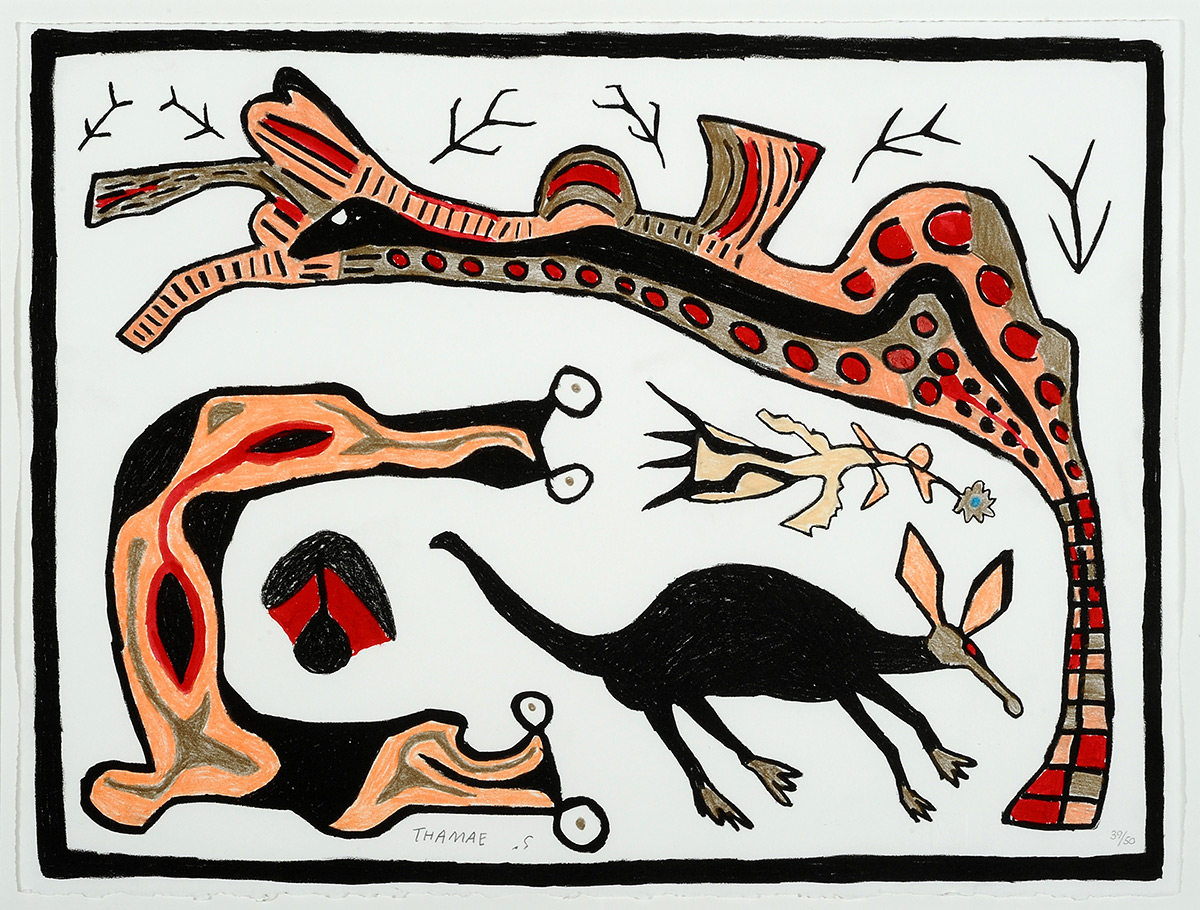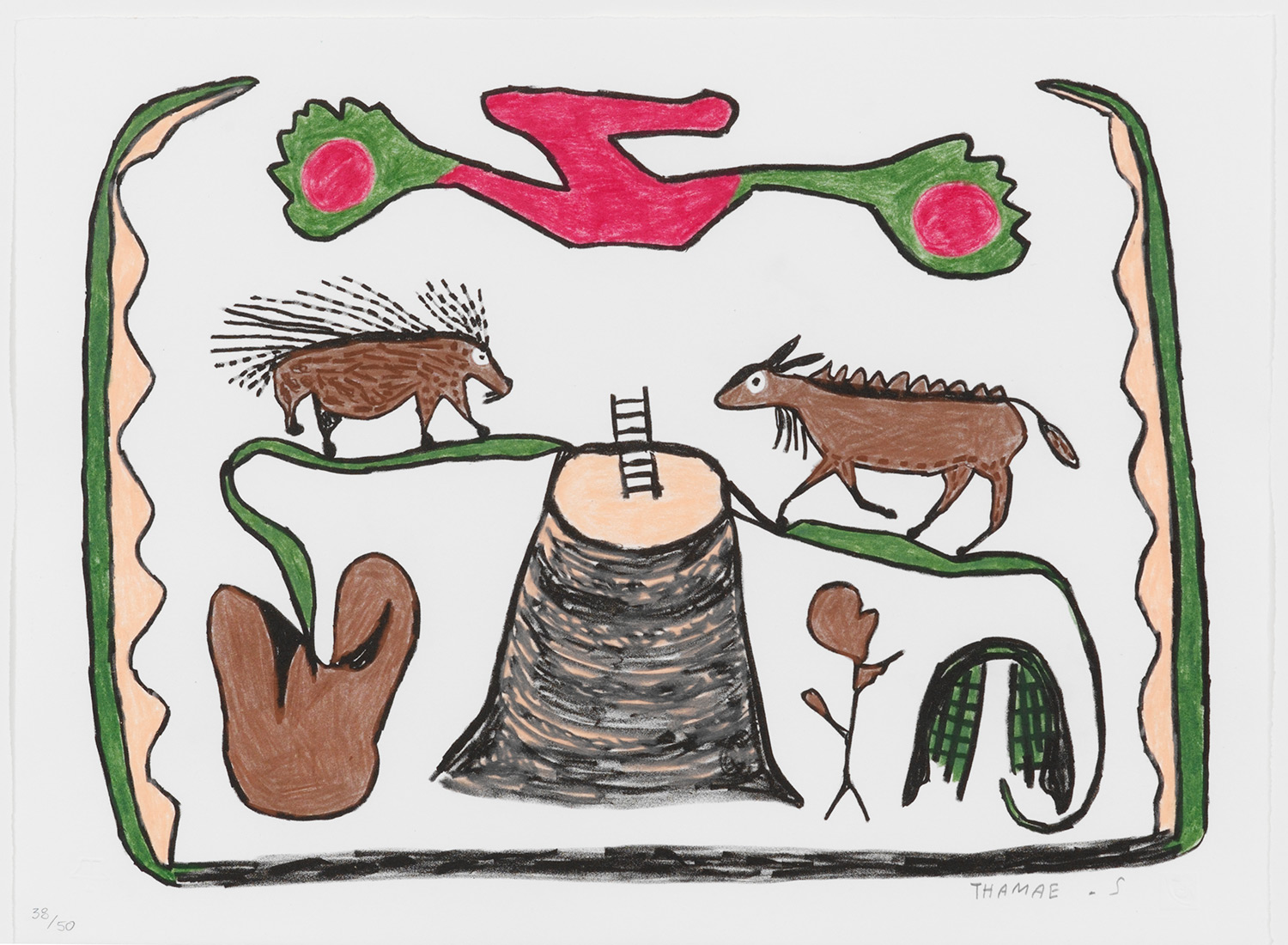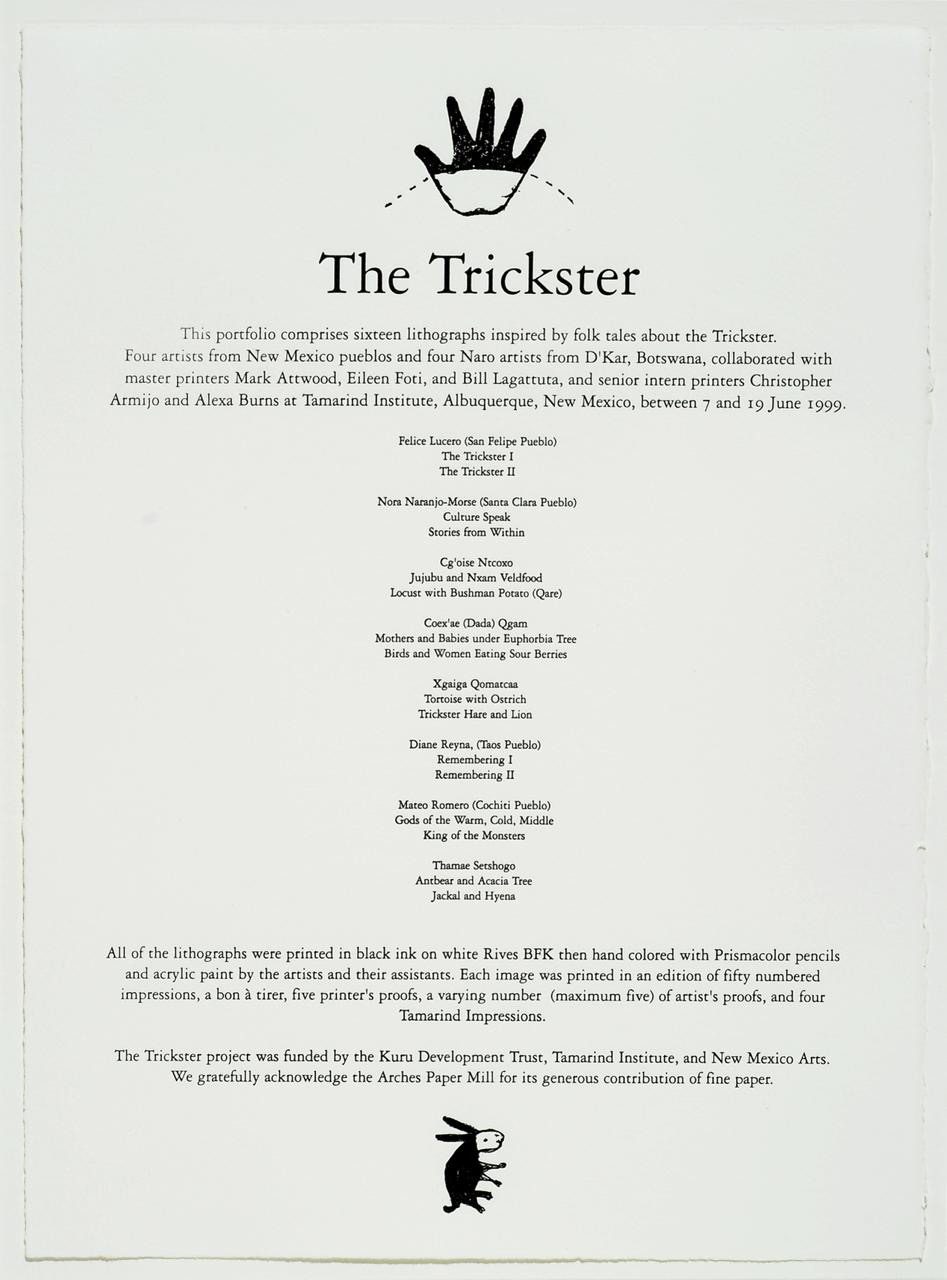THAMAE Setshogo (circa 1965 – 2004)
BIOGRAPHY
Thamae Setshogo was born in Ghanzi, a town in the middle of the Kalahari Desert in western Botswana. He received no formal schooling, but started working at an early age as a labourer on farms – gardening, herding cattle, erecting fences and assisting on transport rides.
In 1990, he joined the Kuru Art Project, set up by the Kuru Development Trust to facilitate the provision of technical advice, materials and studio space to artists from the Ghanzi community. The aim of the Trust is to create greater autonomy, capacity and social advancement for the San/Bushmen of the Ghanzi district. (The terms ‘San’ and ‘Bushmen’ are used here for ease of recognisability, however they are fraught with a loaded history and the people themselves reject all the labels and prefer to be known by their group names, or as the Red People). Artists of the Kuru Art Project paint on canvas, print in a variety of media, including lithography, colour reduction lino prints and monoprints, and occasionally make wooden sculptures.
Setshogo worked as a painter and as a woodcarver, but his bold graphic style found its most effective expression in the immediacy of linocut. The animals of the Kalahari Desert were his favorite subject matter. He created his artworks without any visual references, relying on memory to depict many animals that had not been seen for years in the part of the Kalahari where he lived. His distortion of the animals’ forms adds to the expressiveness of his work. San mythology was important to him and he would depict the mythical figures that he grew up hearing about; such as mischievous water creatures that appear in abundance after good rains have filled the desert pans.
He was one of the artists who worked on Qauqaua, a unique book, published by The Artists’ Press and The Kuru Art Project, which also featured the work of artists Coex’ae Qgam, Qwaa Mangana, Cgose Ncoxo, Sobe Sobe, Nxabe Eland, Coex’ae Bob, Qhaeqhao Moses and Thama Kase.
Setshogo established an international reputation through his involvement in the Kuru Art Project and became one of Botswana’s best-known artists. He remained with the Project until his untimely death in 2004.




